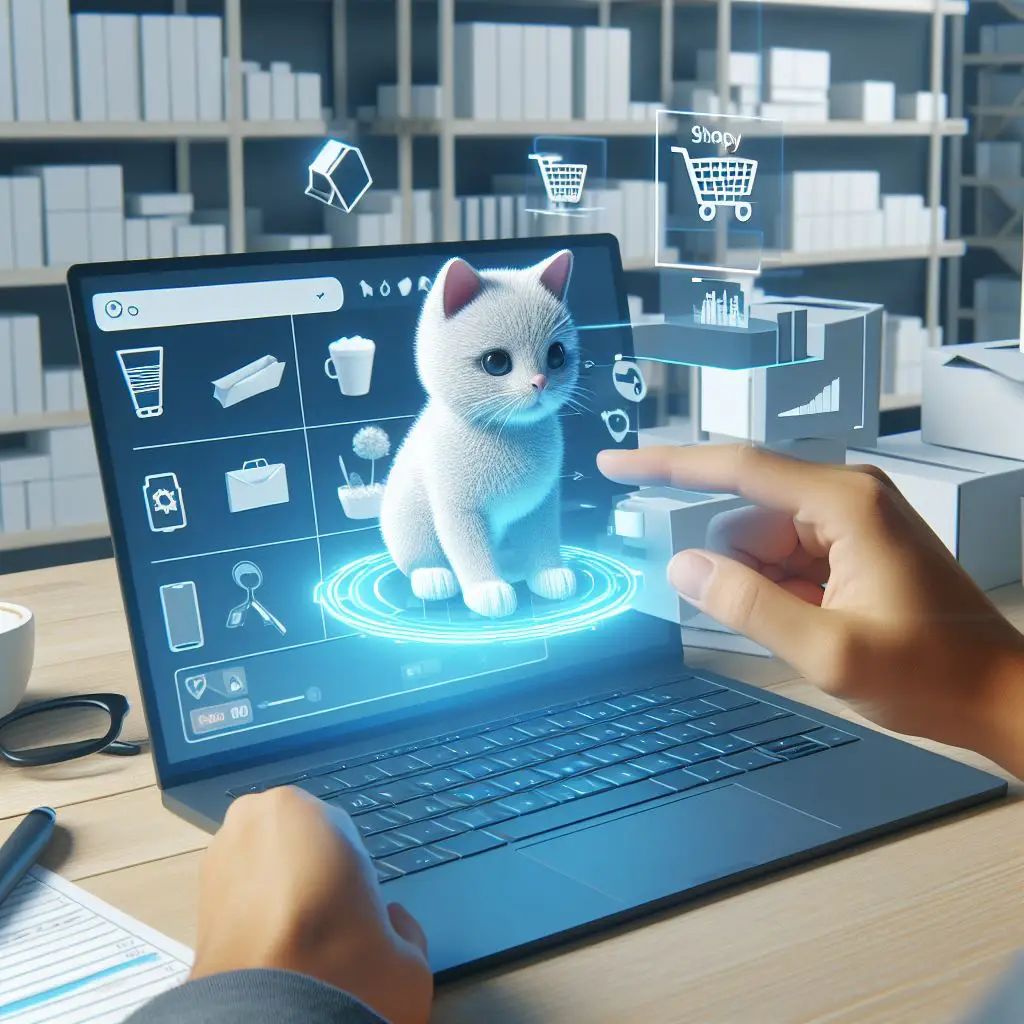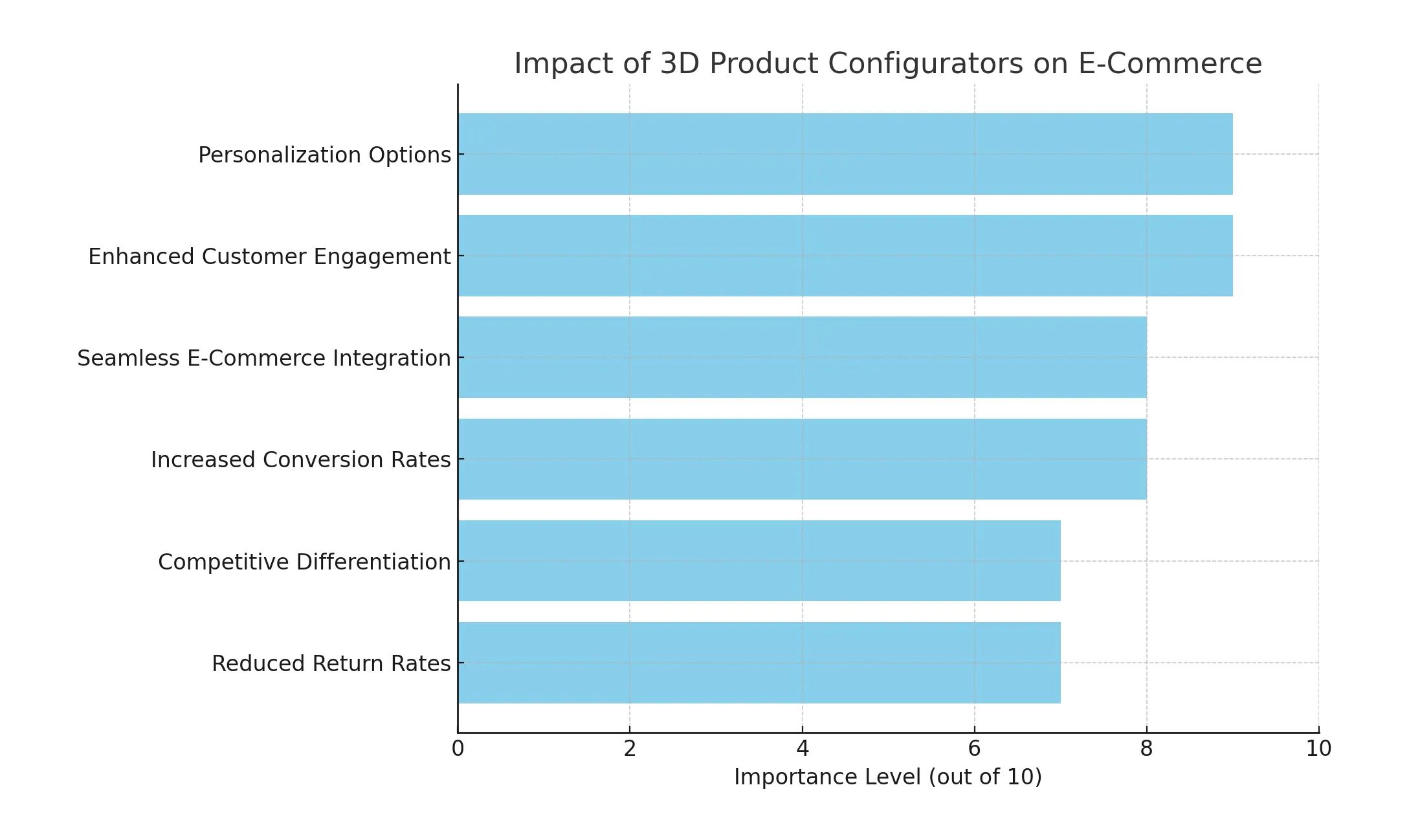- Revolutionizing Online Shopping with 3D Product Configurators
- Setting New Standards in Product Visualization
- The Future of Online Shopping
- Conclusion: A Step Towards the Future of Retail
Key Takeaways
| Key Point | Detail |
|---|---|
| Enhanced Visualization | 3D product configurators allow customers to view products from any angle and customize features like color and size. |
| Customer Engagement | These tools engage customers by showing them the impact of their customization choices in real time. |
| E-Commerce Integration | Seamlessly integrates with e-commerce platforms for an improved shopping experience. |
| Increased Sales | Helps in boosting sales and average cart value by encouraging product customization and upgrades. |
| Reduced Returns | By offering a detailed view of the product, configurators can significantly reduce product returns. |
| Customer Satisfaction | Enhances customer satisfaction by providing a sense of ownership and decision-making in the purchase process. |
¶Revolutionizing Online Shopping with 3D Product Configurators
In the dynamic world of e-commerce, providing an engaging and interactive shopping experience is pivotal. This is where the concept of a 3D product configurator comes into play, revolutionizing how customers interact with products online.
¶Understanding 3D Product Configurators
A 3D product configurator is a cutting-edge tool that takes online shopping to the next level. It allows users to visualize products in a three-dimensional space, offering them the ability to rotate, zoom, and view the item from various angles. This immersive experience is not just about viewing; customers can personalize products to their specifications, choosing colors, textures, and other features in real-time.
Such configurators are particularly useful for items that come in multiple variants or have numerous customizable options, like furniture, clothing, and tech gadgets. By incorporating 3D models, often created using detailed CAD files, these configurators provide an accurate and lifelike representation of the product.
¶Enhancing E-Commerce Experience
Sigwin's 3D/AR Product Configurator exemplifies this technology's prowess. It not only simplifies the buying process for complex products but also integrates flawlessly with your e-commerce platform, maintaining the uniqueness of your brand. This seamless integration means that customers can see real-time price changes as they customize their products and directly add them to their cart, thereby simplifying the purchase process.
¶The Impact on Sales and Customer Satisfaction

One of the most significant benefits of using a 3D product configurator is the potential increase in sales. By providing a detailed and interactive view of the products, these tools encourage customers to explore and add features, upgrades, and accessories. This not only boosts the average cart value by up to 30% but also enhances the perceived value and quality of the products, encouraging customers to buy more or upgrade their choices.
Furthermore, the act of configuring a product can greatly increase customer satisfaction. The process stimulates a sense of ownership and involvement, as customers actively participate in tailoring the product to fit their needs and desires.
¶Reducing Returns and Enhancing Product Presentation
In the e-commerce sector, product returns are a significant challenge. The detailed and accurate imaging provided by 3D configurators allows customers to better understand the product's features and quality, leading to more informed purchasing decisions and, consequently, fewer returns.
Moreover, Sigwin's Configurator can generate high-quality product photos from any angle, transforming your 3D models into stunning visuals. This capability not only enhances the sales process but also saves time and money that would otherwise be spent on traditional photo shoots.
¶Setting New Standards in Product Visualization

The integration of Augmented Reality (AR) with 3D product configurators is a game-changer in the realm of online shopping. Sigwin's AR technology takes the configurator experience a notch higher by allowing customers to visualize the products in their own space. This immersive approach enables customers to understand how a product will look and feel in their environment, which is particularly beneficial for items like furniture and home decor.
¶Personalization at Its Best
The core strength of a 3D product configurator lies in its personalization capabilities. Customers no longer have to rely on static images or generic product displays. Instead, they can tailor their desired products according to their personal preferences and needs. This level of customization is not just limited to visual aspects like color or texture but can also include functional components, depending on the product's nature.
¶Competitive Edge in the Market
In an increasingly competitive online marketplace, differentiation is key. By offering a state-of-the-art 3D product configurator, businesses can set themselves apart from competitors. This unique selling point not only delights customers but also plays a significant role in driving sales and building brand loyalty. It's an innovative way to showcase products, making them more appealing and desirable to potential buyers.
List: Advantages of Using a 3D Product Configurator
| Advantage | Description |
|---|---|
| Enhanced Customer Engagement | Provides an interactive and immersive product experience. |
| Increased Conversion Rates | Engages customers more effectively, leading to higher sales. |
| Personalization Options | Allows customers to customize products to their liking. |
| Reduced Return Rates | Detailed visualization leads to more informed purchases. |
| Seamless E-Commerce Integration | Integrates with online stores for a streamlined shopping experience. |
| Competitive Differentiation | Sets brands apart in a crowded online marketplace. |
¶The Future of Online Shopping
The future of e-commerce is intrinsically linked to the evolution of technology like 3D product configurators. As consumer expectations continue to rise, providing an interactive and personalized shopping experience becomes not just a luxury, but a necessity. The ability to see and customize products in 3D before making a purchase decision will soon become the standard in online retail.

¶Embracing Technological Advancements
Sigwin is at the forefront of this revolution, continuously enhancing its 3D/AR Product Configurator to meet the changing needs of both businesses and consumers. The integration of advanced technologies like AR into the configurator is a testament to Sigwin's commitment to innovation and customer satisfaction.
¶Transforming Customer Experience
The impact of 3D product configurators extends beyond just sales and marketing. It transforms the entire customer experience, making it more engaging, satisfying, and memorable. This shift towards a more interactive and personalized approach in e-commerce is setting new benchmarks in customer experience and satisfaction.
¶Bridging the Gap Between Online and In-Store Shopping
One of the biggest challenges of online shopping has been the inability to replicate the tactile and visual experience of in-store shopping. 3D product configurators bridge this gap by providing a close-to-real-life visual representation of products. Customers can explore and understand products in a way that was previously only possible in a physical store. This advancement is crucial in today’s market, where many consumers still hesitate to purchase certain products online due to the lack of physical interaction.
¶Enhancing Product Exploration
With 3D product configurators, the possibilities for product exploration are virtually limitless. Customers can experiment with various combinations and see the results instantly, which not only enhances their shopping experience but also gives them confidence in their purchase decisions. This level of interaction and exploration is especially beneficial for products with numerous customization options, as it simplifies the decision-making process for the customer.

Table: Impact of 3D Product Configurators on e-commerce
| Impact | Description |
|---|---|
| Improved Customer Confidence | Offers a detailed view of the product, increasing purchase confidence. |
| Interactive Shopping Experience | Allows customers to engage with products in a dynamic way. |
| Higher Customer Retention | Personalized experiences lead to higher customer loyalty and retention. |
| Streamlined Purchase Process | Simplifies decision-making, especially for complex products. |
| Enhanced Brand Image | Innovative technology reflects positively on the brand's image. |
¶Conclusion: A Step Towards the Future of Retail
The introduction and advancement of 3D product configurators represent a significant step towards the future of retail. This technology not only enhances the shopping experience but also provides substantial benefits to businesses in terms of sales, customer satisfaction, and brand differentiation. As we move forward, the adoption of such technologies will become increasingly essential for businesses looking to thrive in the competitive world of e-commerce.